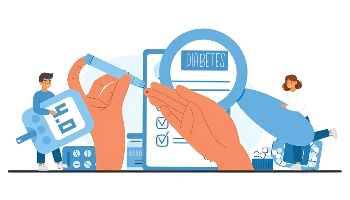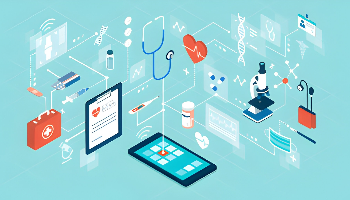10 TIPS FOR HEALTHY DIET WITH DIABETES
Mar 21, 2022
Sugar is not always sweet. Consider a case of excess sugar entering your bloodstream, also known as ‘high blood sugar level’ or “hyperglycemia”. Hyperglycemia is one of the states leading to Diabetes. Diabetes mellitus is a chronic disorder caused by hereditary or non-standard eating habits and a sedentary lifestyle leading to volatility in blood sugar levels. There are different types of diabetes; no two people with diabetes have similar complications. Hence, a ‘one-size-fits-all’ diabetes diet is unthinkable for people suffering from diabetes.
In feng shui, there are three gods i.e. Fuk, Luk, and Sau. ‘Sau’ is God to attract health, and long-life into a person’s life. Hence, we can invoke Sau in us with a smart way of living through a healthy and balanced diet. Further, this type of diet helps manage blood glucose (sugar), control blood pressure, and regulate cholesterol levels. Further, a self-disciplined diet regime as prescribed by a doctor/nutritionist lowers body weight and reduces the risk of diabetes complications i.e. heart problems and strokes, organ degenerative health conditions including certain types of cancers.
Here are 10 tips to revolutionize the lifestyle of a diabetic patient.
Tip #1
Three meals and three snacks per day
Your everyday food consumption should be distributed across 3 major meals (i.e. breakfast, lunch, and dinner) and 3 healthy snacks in-between meals to resist hunger pangs. The quantity of snacks should not be equal to any of the 3 meals rather it should be fewer portions. A healthy bedtime snack helps a diabetic patient to overcome mid-night or early morning hypoglycemia (low blood sugar level).
Tip #2
Consume more of complex carbohydrates
Complex CHO (carbohydrates) is significantly better than simple CHO. As simple CHO (i.e. sugar, honey, jaggery, sweets, chocolates, muffins, fruit juice, carbonated beverages, plain rice, maida, sabudana or tapioca, etc) does not contain any fiber so the absorption is fast leading to a spike in blood sugar level. Foods like wheat, fruits with skin and pulp, rice with vegetables, salads, any kind of vegetables, wheat bread, wheat noodles, wheat pasta, etc. are complex carbs that are rich in fiber content (i.e. thereby digestion and absorption period are longer than usual.
Tip #3
Reduce added sugar
We love sugar in our foods and its difficult to resist or cut down sugar/sugar variants at the beginning. Therefore, practical substitutes of sugar are a good starting point. For example low-sugar or ‘0’ sugar labeled drinks, zero-calorie energy drink, coconut water, plain milk, buttermilk, different types of flavored tea, and coffee without refined/natural sugar added and cut fruits with skin are healthy substitutes for sugar.
Moreover, consumption of low or zero-calorie sweeteners (i.e. artificial sweeteners) moderates our blood glucose levels and body weight. Most of the sweeteners available in the stores may harm more than do good to our body. Comparatively, stevia leaves as a sweetener are safer to switch to. In the case of diabetes treatment, there are few conditions of ‘hypoglycemia’ (hypo) where sugary drinks can be used in moderation for treatment. For this special case, it is important not to cut down sugar intake as part of your diabetes management. However, if there is prolonged hypoglycemia (i.e. low blood sugar level), consult with your doctor and diabetes management team on the diet plan.
Tip #4
Eat good quality and quantity of protein
Indian diet lacks in both quality and quantity of protein. It is advised to have a sizable portion of 1st class of protein such as lean meat, eggs, egg, chicken, fish, etc in your diet if you are non-vegetarian. However, a vegetarian plate must have protein from plant and dairy sources such as broccoli, home-made paneer, low-fat cheese, different pulses and legumes, soybeans, mushrooms, tofu, etc.
Tip #5
Healthier fat eases your blood flow
Fat generates energy in our bodies. Vitamins and minerals are absorbed in our body with the help of fat molecules to provide us with energy and immunity strength. Are you aware that there are different types of fats that positively or negatively impact our health?
Daily cooking oil (e.g. rice bran oil, sunflower oil, sesame oil, canola oil, soya oil, corn oil, olive oil), unsalted nuts, seeds, avocados, oily fish are sources of healthy fats providing for good cholesterol in our body. In contrast, saturated fats increase the amount of bad cholesterol in the blood, thereby causing heart ailments and arterial blockage. Found primarily in animal products and processed foods like red and processed meat, ghee, butter, ‘vanaspati’, mayonnaise, biscuits, cakes, pies, and pastries. A life-long fit-tip would be cut down on using oils in general for cooking, instead, try to grill steam or baked foods.
Tip #6
Fulfill your daily dairy consumption
Dairy products such as curd, cheese, milk, buttermilk, or home-made paneer are enough to meet the daily dietary calcium intake for your body. When it comes to a diabetic patient, his or her average daily dairy product consumption should be ~500 ml.
Tip #7
Fiber creates magic with your blood sugar
Fiber has a key role in diabetic diet management to suppress blood sugar levels. When it comes to a diabetic person, his or her average daily dietary fiber requirement is ~25-35 gm from normal consumed food (excluding any supplements). The best sources of dietary fiber are raw and cooked vegetables, whole fruits with pulp and whole grains, and legumes. Thus, vegetable or lightly cooked leafy vegetables across 3 major meals with whole fruits for snacks can provide an adequate amount of fiber in your diet.
Tip #8
Light and tasty snacks are a smart choice
We all love tasty snacks. But, one should always select snacks that not only tasty but also healthy at the same time. For example, low-fat yogurts, unsalted nuts (almonds and walnuts), flax/pumpkin seeds, fruits and vegetables, sprouts salads, makhana (lotus seeds) instead of fried crisps, potato or banana chips, biscuits, and chocolates. Portion size is sacrosanct and needs our self-control. Therefore, the snacks portion should be little as compared to your basic meals.
Tip #9
Consume alcohol responsibly
Alcohol has a high calorific value, so drinking in moderation is recommended to lose bodyweight. Hence, restrict your alcohol consumption to a maximum of 1 ounce per week. Guard your urge to binge drinking, and practice surviving for several days a week without consuming alcohol. If you are administered with insulin dose and or periodic diabetes medications, avoid alcohol on an empty stomach as it may lead to a serious condition of hypoglycemia. Instead, you may consume alcohol (always in moderation) either during dinner or after dinner.
Tip #10
The body is water, so keep yourself hydrated
Generally, water is never considered as a nutrient in our diet. Did you know that up to 60% of the human adult body is water? Our body uses water to nourish all its cells, organs, and tissues. Water is depleted from our body through various actions including involuntary functions like breathing, sweating, and digestion. Drinking water can be practiced throughout the daylight hours, however, water should be consumed before major meals. Additionally, there should be a time interval after a meal to recommence drinking water. Hence, it is pertinent to re-hydrate ourselves by drinking enough water, non-sugar fluids, and eating foods that contain natural water or freshly squeezed juices along with pulp (instead of packaged or processed juices) as it helps lower our body temperature and systematically maintains other body functions.
Recent Post

Best medicine for diabetes: Safe Ordering, Refills & Care Bundle

Best Online Medical Supply Store in India: What to Buy & How to Choose

Online Medicine Application in India: How to Choose & Use It Safely

Best Online Medicine App in India: Features, Safety & Fast Ordering

8 Effective Summer Health Tips for the Season!

WAYS TO GET A BETTER SLEEP

COVID-19 & Vaccination during Pregnancy Tips for moms

